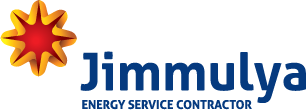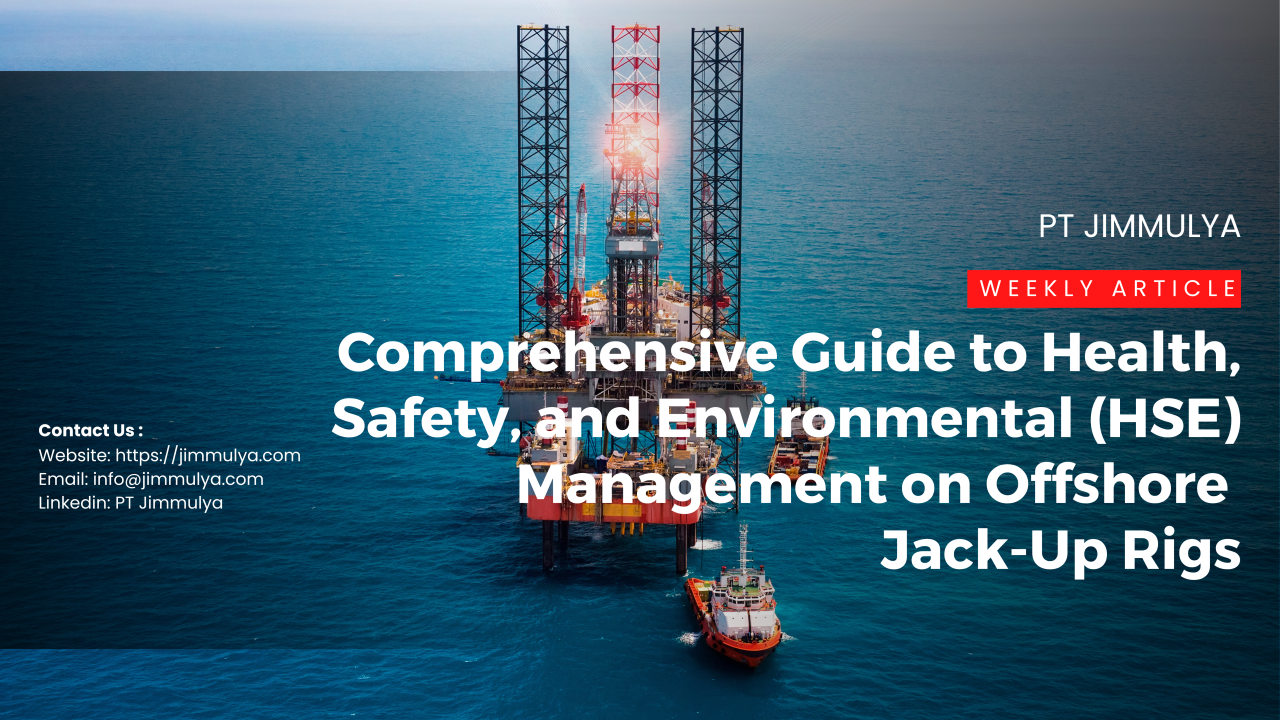Introduction
Offshore drilling operations, particularly those involving jack-up rigs, present unique and complex challenges when it comes to Health, Safety, and Environmental (HSE) management. Jack-up rigs, a type of Mobile Offshore Drilling Unit (MODU), are typically deployed in shallow waters for drilling, exploration, and production of oil and gas. Their mobile nature and the often-harsh environmental conditions they operate under create specific risks that need to be carefully managed.
In this in-depth guide, we will explore the intricacies of HSE management specific to offshore jack-up rigs, focusing on best practices to enhance safety, protect the environment, and optimize operational efficiency. From personnel safety to environmental sustainability, effective HSE practices on jack-up rigs are essential for mitigating risks and ensuring successful offshore operations.
1. What is a Jack-Up Rig?
A jack-up rig is a type of mobile platform designed for offshore drilling operations in shallow waters (typically less than 400 feet). Unlike other types of rigs such as semi-submersibles or drill ships, jack-up rigs are equipped with long, extendable legs that “jack up” the platform above the water’s surface, providing a stable base for drilling operations. Jack-up rigs are popular due to their mobility, cost-efficiency, and ease of deployment.
However, operating in such dynamic environments introduces numerous challenges related to personnel safety, equipment integrity, and environmental protection. Addressing these concerns through comprehensive HSE practices is critical for the sustainability and success of offshore drilling projects.
2. Importance of HSE in Offshore Jack-Up Rigs
Offshore drilling is one of the most dangerous industrial sectors. The remote location, extreme weather conditions, high-pressure systems, and heavy machinery all pose significant risks to workers, equipment, and the surrounding environment. For jack-up rigs, which often operate in rapidly changing conditions, HSE management is not just a regulatory requirement but a business imperative.
– Health and Safety: Offshore workers are exposed to potential hazards including falls, equipment failure, fire, and explosions. Without a robust safety management system, the risk of fatal accidents increases significantly.
– Environmental Protection: Offshore spills, marine pollution, and emissions can have long-lasting, devastating effects on marine ecosystems and coastal communities. Environmental conservation is integral to HSE practices to prevent negative impacts.
Implementing an HSE framework helps reduce operational risks, ensures compliance with regulatory standards, and enhances overall productivity.
3. Key HSE Considerations in Offshore Jack-Up Rigs
3.1. Personnel Safety
Ensuring the safety of the crew is a top priority in any offshore drilling operation. The confined spaces, heavy machinery, and dynamic environmental conditions create an environment where accidents can happen without warning.
Best Practices:
- Training and Competency: Regular safety training is essential for all crew members. This includes familiarization with emergency response procedures, proper equipment handling, and hazard awareness.
- Personal Protective Equipment (PPE): Use of appropriate PPE such as helmets, gloves, safety glasses, and harnesses is critical. Rig supervisors should ensure all PPE is regularly inspected and replaced when necessary.
- Fatigue Management: Long shifts and remote working conditions can lead to worker fatigue, which is a major risk factor in offshore operations. Implementing work-rest cycles and monitoring for signs of fatigue can help reduce accidents.
- Behavior-Based Safety (BBS): Encouraging proactive participation in safety programs and promoting a culture where workers feel comfortable reporting unsafe conditions helps in identifying and mitigating risks before they lead to incidents.
3.2. Structural Integrity and Rig Stability
The stability of a jack-up rig is crucial for maintaining operational safety. Unstable rigs can lead to catastrophic incidents, including capsizing or structural collapse.
Best Practices:
- Pre-Load Testing: Before drilling operations commence, pre-load testing should be conducted to ensure the seabed can support the weight of the rig. This involves simulating the full load the rig will experience during operations.
- Regular Inspections and Maintenance: All mechanical systems, such as the jacking system, hull integrity, and leg positioning, must undergo regular inspections. This includes visual inspections, non-destructive testing (NDT), and preventive maintenance schedules to prevent failures.
- Weather and Ocean Monitoring: Continuous monitoring of weather and sea conditions is crucial to maintain stability. High winds, waves, and storms can destabilize the rig, so having a clear evacuation and emergency shutdown plan is vital.
3.3. Emergency Preparedness and Response
Offshore operations must have a well-developed emergency response plan to address potential incidents such as blowouts, fires, and medical emergencies.
Best Practices:
- Fire and Explosion Prevention: Fire suppression systems, gas detectors, and explosion-proof equipment should be standard on all rigs. Fire drills should be regularly conducted, and all personnel must know the location and use of fire-fighting equipment.
- Medical Preparedness: Having medical facilities on board, along with trained personnel, ensures that injuries and health issues can be addressed immediately. Emergency medevac procedures should be rehearsed regularly.
- Blowout Prevention: The use of Blowout Preventers (BOPs) is critical for preventing uncontrolled releases of oil or gas. Regular testing and maintenance of BOP systems must be a priority.
3.4. Environmental Protection
Given the proximity to sensitive marine ecosystems, jack-up rig operators must implement stringent measures to reduce environmental impacts.
Best Practices:
- Oil Spill Contingency Plans: Having an oil spill response plan, which includes the deployment of containment booms, skimmers, and other equipment, is essential for minimizing the impact of accidental spills.
- Waste Management: Offshore operations produce waste such as drilling fluids, chemicals, and solid waste. Proper waste handling procedures, including treatment and disposal, must comply with international regulations to prevent pollution.
- Greenhouse Gas Reduction: Reducing emissions from power generators, engines, and other equipment through fuel-efficient technologies can minimize the rig’s environmental footprint. Transitioning to renewable energy sources for auxiliary power is also a growing trend in the offshore sector.
4. Technological Innovations in HSE for Jack-Up Rigs
Technological advancements are playing an increasingly important role in improving HSE standards in offshore drilling. Here are some emerging technologies that enhance safety and environmental protection:
- Remote Monitoring Systems: These systems allow for real-time monitoring of critical equipment, environmental conditions, and safety parameters, reducing the need for manual inspections and preventing human error.
- Drones and Robotics: Drones are being used for aerial inspections of jack-up rigs, while underwater robots (ROVs) assist in subsea inspections. These technologies reduce the need for personnel to enter hazardous areas.
- Predictive Analytics: By analyzing large datasets, predictive maintenance tools can forecast when equipment failures are likely to occur, allowing for preemptive action before an incident happens.
- Advanced Fire Suppression: New fire suppression systems using inert gases and automated sprinkler systems provide faster and more effective fire control in offshore environments.
5. Conclusion
HSE management on offshore jack-up rigs is a dynamic and complex endeavor, requiring meticulous planning, ongoing training, and the integration of emerging technologies. By implementing best practices that focus on personnel safety, structural integrity, emergency preparedness, and environmental protection, operators can ensure safer and more efficient offshore operations.
A proactive approach to HSE not only prevents accidents but also enhances operational productivity and minimizes environmental impact, making it a key driver for sustainable growth in the offshore oil and gas industry.
Key Takeaways:
– Continuous training and promoting a strong safety culture are critical.
– Regular maintenance and monitoring of equipment ensure rig stability and safety.
– Technological advancements like predictive analytics and drones are shaping the future of HSE on jack-up rigs.
Enhancing HSE measures will remain at the core of creating a safer, more efficient, and environmentally responsible offshore drilling industry.
#HSE #OffshoreDrilling #JackUpRigs #SafetyFirst #EnvironmentalProtection

